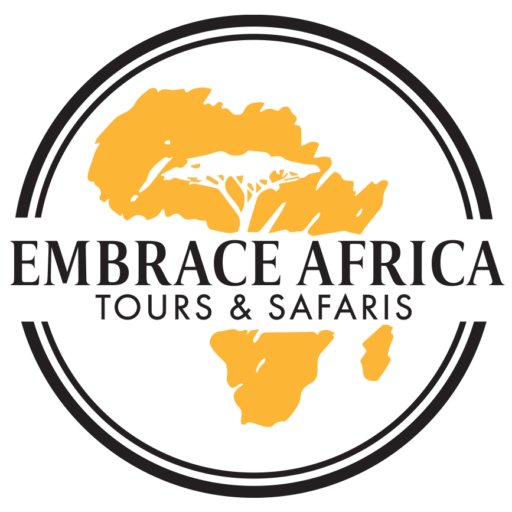To successfully trek Mount Kilimanjaro with Embrace Africa Tour and Safari, it’s essential to prepare physically and mentally. Proper fitness and training will not only enhance your experience but also increase your chances of reaching the summit. Below is a comprehensive guide on how to train for this adventure.
Fitness and Training for Trekking Mount Kilimanjaro
1. Start Training Early:
- Timeline: Begin your training at least 8-12 weeks before your trek. This allows enough time to build the necessary endurance, strength, and flexibility.
- Consistency: Aim for 4-5 training sessions per week, with a mix of cardio, strength training, and flexibility exercises.
2. Focus on Cardiovascular Endurance:
Climbing Kilimanjaro involves long days of hiking, often at high altitudes, so cardiovascular fitness is key.
- Hiking: Simulate trekking conditions by hiking on varied terrains. Start with shorter hikes and gradually increase the distance and elevation. If possible, hike with a weighted backpack (10-15 pounds) to prepare for carrying your gear.
- Running and Cycling: Incorporate running or cycling to boost cardiovascular endurance. Aim for 30-60 minutes of moderate to intense cardio 3-4 times a week.
- Stair Climbing: If you don’t have access to trails, stair climbing is an excellent alternative. Try climbing stairs with a weighted backpack to build leg strength and stamina.
3. Build Leg and Core Strength:
Strong legs and core muscles are essential for the continuous uphill and downhill trekking on Kilimanjaro.
- Leg Exercises: Focus on squats, lunges, step-ups, and calf raises. Perform these exercises with added weight (e.g., dumbbells) to build strength.
- Core Workouts: Planks, mountain climbers, and leg raises help strengthen your core, which stabilizes your body during the trek.
- Resistance Training: Include resistance training 2-3 times a week to build overall muscle strength and endurance.
4. Improve Flexibility and Balance:
- Stretching: Regular stretching will improve flexibility and reduce the risk of injury. Incorporate stretches for your legs, back, and shoulders, focusing on hamstrings, quads, and calves.
- Yoga: Yoga can enhance flexibility, balance, and mental focus. Consider adding a few yoga sessions to your weekly routine to help with body awareness and relaxation.
5. Focus on Altitude Acclimatization:
While you can’t train for altitude at home, you can prepare your body to handle the effects of lower oxygen levels.
- Breathing Exercises: Practice deep breathing exercises, like diaphragmatic breathing, to help your body efficiently use oxygen.
- Simulated Altitude Training: If you have access to a high-altitude training facility, this can help prepare your body for the reduced oxygen levels on Kilimanjaro. However, this is optional and not necessary for everyone.
6. Mental Preparation:
- Stay Positive: Climbing Kilimanjaro is mentally demanding, especially on summit day. Practice mindfulness, meditation, or visualization techniques to build mental resilience.
- Pace Yourself: Learn to hike at a steady, sustainable pace. The Swahili phrase “pole pole” (slowly, slowly) is key to success on Kilimanjaro.
- Break Down the Challenge: Mentally prepare for the trek by breaking it down into smaller, manageable sections, focusing on one step at a time.
7. Prepare for Long Days on Your Feet:
- Endurance Hikes: As your trek approaches, try to complete long hikes (6-8 hours) on consecutive days. This will simulate the multi-day nature of the Kilimanjaro climb and help condition your body to recover overnight.
- Footwear: Train in the same hiking boots you plan to wear on Kilimanjaro. Make sure they are well broken in to avoid blisters and discomfort.
8. Practice Hydration and Nutrition:
- Stay Hydrated: During your training hikes, practice drinking plenty of water to stay hydrated. On Kilimanjaro, you’ll need to drink 3-4 liters of water per day.
- Eat for Energy: Focus on a balanced diet rich in carbohydrates, proteins, and healthy fats. During training, experiment with snacks like nuts, energy bars, and dried fruits that you’ll also bring on the trek.
9. Monitor Your Progress:
- Track Your Fitness: Keep a log of your workouts, hikes, and how you feel. Gradually increase the intensity and duration of your training sessions as you get closer to your trek.
- Assess Your Readiness: As the trek date approaches, assess your fitness level. You should feel confident in your ability to handle long hikes with a weighted backpack.
10. Rest and Recovery:
- Rest Days: Include rest days in your training schedule to allow your body to recover. Overtraining can lead to injuries, which can jeopardize your climb.
- Sleep: Ensure you get plenty of sleep during your training. Good sleep is essential for recovery and overall performance.
Final Tips:
- Consult a Trainer: If you’re unsure where to start or need personalized guidance, consider working with a fitness trainer who can tailor a program to your needs.
- Get a Health Check: Before embarking on intense training and the trek itself, consult with your doctor, especially if you have any pre-existing medical conditions.
With a solid training plan and commitment, you’ll be physically and mentally prepared for the adventure of a lifetime on Mount Kilimanjaro. Embrace Africa Tour and Safari will provide the logistical support, experienced guides, and encouragement you need to make your summit bid successful!
